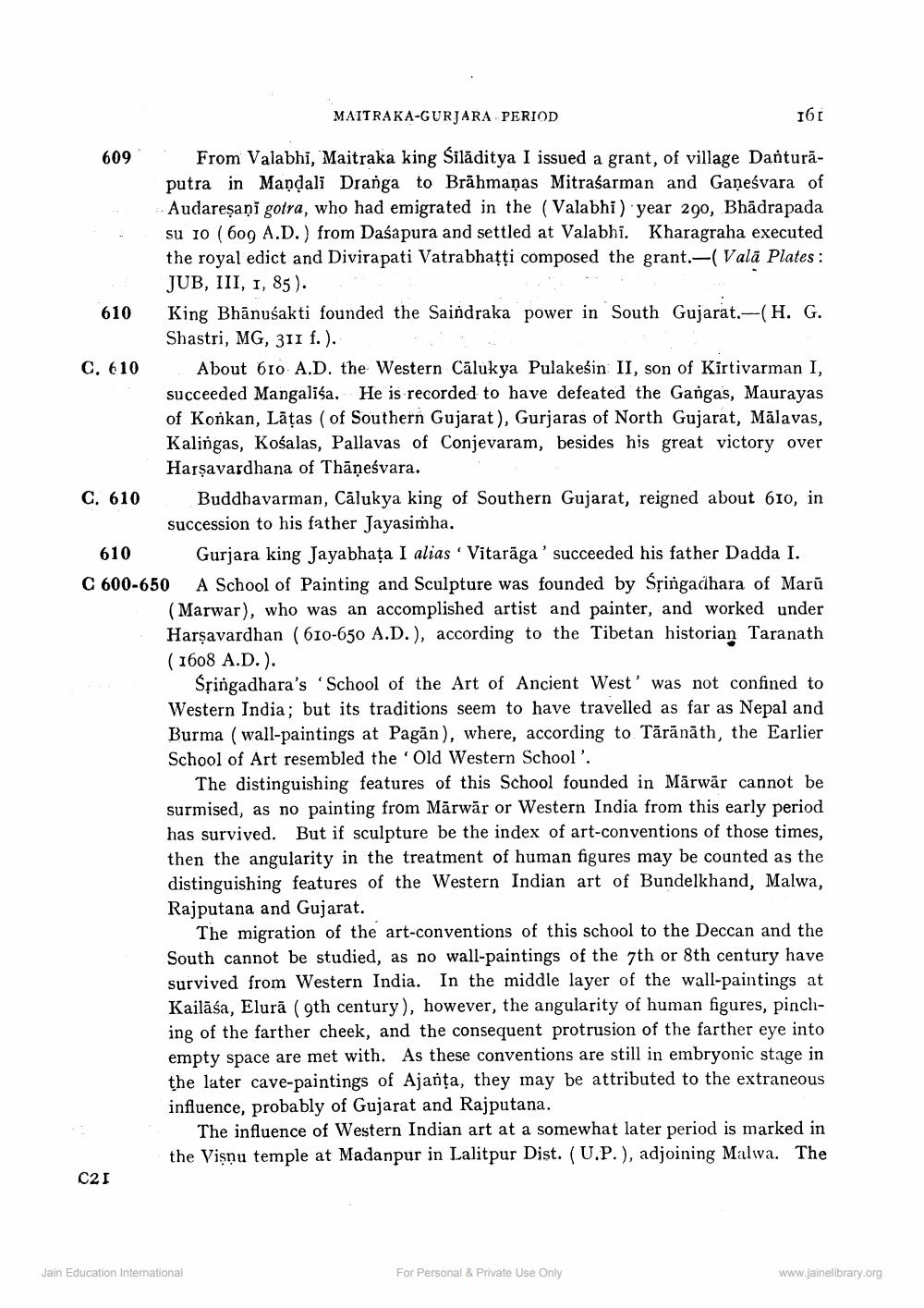________________
609
610
C. 610
C. 610
C2I
MAITRAKA-GURJARA PERIOD
From Valabhi, Maitraka king Siläditya I issued a grant, of village Danturăputra in Mandall Dranga to Brahmanas Mitrasarman and Ganesvara of Audaresani gotra, who had emigrated in the (Valabhi) year 290, Bhadrapada su 10 (609 A.D.) from Dasapura and settled at Valabhi. Kharagraha executed the royal edict and Divirapati Vatrabhatți composed the grant.-(Valā Plates: JUB, III, 1, 85).
King Bhānusakti founded the Saindraka power in South Gujarat. (H. G. Shastri, MG, 311 f.).
161
About 610 A.D. the Western Calukya Pulakesin II, son of Kirtivarman I, succeeded Mangalisa. He is recorded to have defeated the Gangas, Maurayas of Konkan, Latas (of Southern Gujarat), Gurjaras of North Gujarat, Mälavas, Kalingas, Kosalas, Pallavas of Conjevaram, besides his great victory over Harşavardhana of Thānesvara.
Buddhavarman, Calukya king of Southern Gujarat, reigned about 610, in succession to his father Jayasimha.
610 C 600-650
Gurjara king Jayabhața I alias Vitaraga' succeeded his father Dadda I. A School of Painting and Sculpture was founded by Sringadhara of Marū (Marwar), who was an accomplished artist and painter, and worked under Harşavardhan (610-650 A.D.), according to the Tibetan historian Taranath (1608 A.D.).
Sringadhara's 'School of the Art of Ancient West' was not confined to Western India; but its traditions seem to have travelled as far as Nepal and Burma (wall-paintings at Pagan), where, according to Täränäth, the Earlier School of Art resembled the Old Western School'.
The distinguishing features of this School founded in Märwär cannot be surmised, as no painting from Mårwär or Western India from this early period has survived. But if sculpture be the index of art-conventions of those times, then the angularity in the treatment of human figures may be counted as the distinguishing features of the Western Indian art of Bundelkhand, Malwa, Rajputana and Gujarat.
The migration of the art-conventions of this school to the Deccan and the South cannot be studied, as no wall-paintings of the 7th or 8th century have survived from Western India. In the middle layer of the wall-paintings at Kailasa, Elură (9th century), however, the angularity of human figures, pinching of the farther cheek, and the consequent protrusion of the farther eye into empty space are met with. As these conventions are still in embryonic stage in the later cave-paintings of Ajanța, they may be attributed to the extraneous influence, probably of Gujarat and Rajputana.
The influence of Western Indian art at a somewhat later period is marked in the Visnu temple at Madanpur in Lalitpur Dist. (U.P.), adjoining Malwa. The
Jain Education International
For Personal & Private Use Only
www.jainelibrary.org




